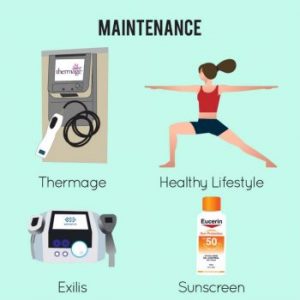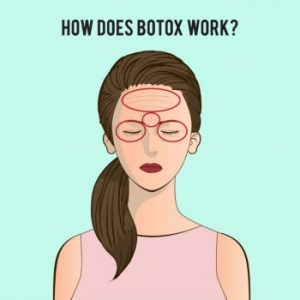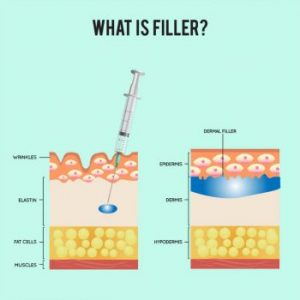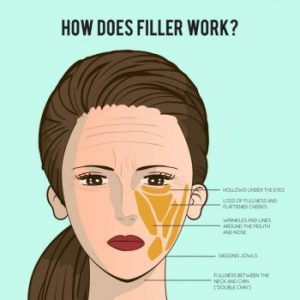Injectables such as Botox and dermal fillers are a great way to maintain a youthful look for a fraction of what a traditional facelift surgery cost. The procedure usually takes less than 30 minutes and can last between 4 months to 2 years. That being said it’s vital to understand the differences to ensure your expectations are met on what they can and cannot do.
Botox and dermal fillers are part of aesthetic treatments given through injections by doctors in medical centres or clinics. They are considered minimally invasive procedures meaning they do not involve any surgical incisions.
Botox and dermal fillers are quite common procedure and have gained popularity in the recent years. Botox contains a type of toxin that relaxes muscles, in doing so it can minimize the appearance of lines and wrinkles caused by facial expressions. It can also be used to treat migraines and other medical conditions.
Dermal fillers on the other hand contain ingredients that add volume to areas that have depleted collagen due to aging. Areas that are commonly lacking collagen are: cheeks, lips and around the mouth (marionette lines).
There are different types of wrinkles that need to be addressed by different injectables. The least risks and best results come from using the right one. That’s why it is important to have Botox or dermal fillers injected only by a certified aesthetic doctor or plastic surgeon.
What is Botox?
Before we proceed further, it is important to know the difference between Botox and Botulinum toxin. Botulinum toxin is a neurotoxic protein produced by the bacterium Clostridium botulinum, manufactured by a variety of companies, for both therapeutic and cosmetic use. Botulinum toxin A is marketed under the brand names Botox and Xeomin. Botulinum toxin B is marketed under the brand name Myobloc.
Therefore, the phenomenon where people are more inclined to say “Botox” instead of Botulinum toxin A is much like how we are used to say “Panadol” instead of paracetamol.
Botox is used to reduce fine lines and wrinkles by paralyzing the underlying muscles. When injected, Botox works by blocking nerve signals in the muscles. When the signals have been disrupted, the affected muscle becomes temporarily paralyzed. Without the movement of these muscles in the face, wrinkles can be softened, reduced or completely disappear.
People also use Botox to treat excessive sweating, migraines, muscular disorders, and some bladder and bowel disorders.
Botox can be dangerous is large quantities, however, it is approved by the US Food and Drug Administration (FDA) and safe to use in small regulated amounts.
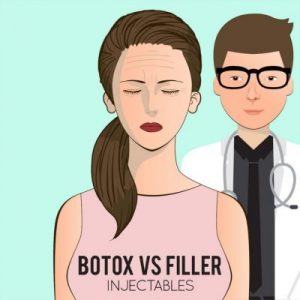
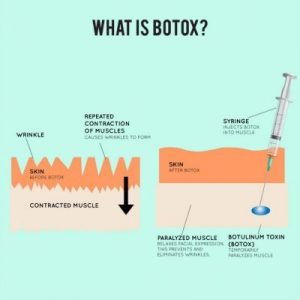
How does Botox work?
Botox only works on wrinkles that are caused by muscle movements, these are known as dynamic wrinkles or expression lines. Botox will not work on fine lines and wrinkles that are caused by sagging or loss of
collagen in the face, these are known as static wrinkles, in which, dermal fillers are recommended. It should also be stated that Botox is not a permanent treatment, it needs to be repeated as necessary for the continued effects. Depending on the area that Botox is injected it can last between 3-4 months.
Botox works best on these dynamic wrinkles:
- Upper Face
- Between the brows
- Horizontal lines on the forehead
- Crow’s feet around the eyes
- Any other muscles that cause facial expressions; smiling, frowning, squinting
Side Effects / Risks of Botox
As Botox wears off over time, most side effects are only temporary. Possible side effects include but not limited to:
- Droopy Eyelid (if injected too near the eye)
- Weakness or paralysis of nearby muscles
- Allergic reaction (hive, rashes, itching)
- Pain, bleeding, bruising, swelling, numbness or redness
- Headache
- Dry mouth
- Nausea
What is a dermal filler?
Dermal fillers are sometimes called soft tissue fillers, they are designed to be injected beneath the surface of the skin to add volume and fullness.
Types of dermal fillers:
Hyaluronic Acid Fillers
Juvederm, Restylane or Belotero contains Hyaluronic Acid, which is found some fluids and tissues in the body that add plumpness into the skin
Synthetic Fillers
- Radiesse contains Calcium Hydroxylapatite, which is a mineral-like compound found in bones
- Sculptra contains Polyactic Acid which stimulates the skin to produce more collagen
- Bellafill contains Polymenthyl-methacrylate microspheres (PMMA) a semi-permanent filler
- Polyalkyimide, a transparent gel that is compatible with the body
Autologous Fillers
- Fat is the most commonly used substance in this category. Your own fat will be surgically removed (from abdomen, thigh, buttocks, etc), it will then be purified and injected back into the skin. This method is semi-permanent and treatment needs to be repeated over time.
- Platelet Rich Plasma (PRP) is another type of autologous wrinkle filler. Blood is drawn from the arm, centrifuged (spun in machine) and plasma is separated and injected into the face. The effects can last around 1 year plus.
Each of the ingredients are designed to treat different signs of aging and other cosmetic issues. Patients should discuss their expectations with a certified aesthetic doctor to determine on which fillers is suitable for the areas you would like to improve.
How does dermal fillers work?
As we mentioned previously, different types of dermal fillers are designed to treat varying signs of aging. Depending on which filler is selected they can correct:
- Thin Lips
- Shallow arears of the face
- Wrinkles under the eyes
- Scars
- Static wrinkles (around the mouth and along the cheeks, these wrinkles are often caused by a loss of collagen and elasticity in the skin.)
Fillers can last for varying lengths of time depending on where it is injected and what filler is used. Some fillers last up to 6 months whilst others can last up to 2 years.
Side Effects / Risks of Dermal Fillers
Dermal fillers are considered a safe procedure but side effects can occur. Some of the most common problems include:
- Allergic reaction, skin rash, itching or pimple-like eruptions
- Redness, bruising, bleeding or swelling
- Undesirable appearance, such as symmetry, lumps or overcorrection of wrinkles
- Skin damage that causes wound, infection or scarring
- Ability to feel the filler substance under the skin
- Blindness or other vision problems
Key Differences
In summary, the difference between Botox and Fillers are:
Botox: Relaxes the muscles to stop creases and wrinkles caused by facial muscles. They are typically found on the upper face such as forehead and eyes. Botox usually last 3 – 4 months.
Dermal Fillers: Used to fill in or plump areas that has lost volume due to collagen and elasticity loss. They are typically injected around the lower face such as around the mouth, thin lips and cheeks. They may also be injected on forehead wrinkles, scars and other areas that need volume. Filler usually last around 6 months to 2 years depending on the type of filler used.
Dermal fillers might produce more long-term results however these injections also carry more side-effects compared to Botox. You should also keep in mind that since Botox and dermal fillers are made from different substances, they are used to treat different areas of the face. Doctors may suggest that they be combined during one treatment. For example, Botox can be used to correct the wrinkles around the forehead and a filler be used to correct marionette lines (around the mouth).
Things to take note
To minimize the risk and increase a good outcome, there are some things that you can do:
- Don’t let price be your guide. If the injectables (Botox & dermal fillers) cost less than the standard treatment, it is likely something has been compromised such as the skill of the provider or the quality of the product. It’s not worth the risk to take a bargain with your face.
- Injectables should be done in medical setting with sterile conditions and instruments. Never settle for treatments done in homes, spas, hotels or resorts as they are not medically sound, regardless of who is doing them.
- Do not get injectables done from other sources aside from accredited aesthetic doctors and plastic surgeons. You should be aware of what is being injected into your face, ask your doctor for an FDAapproved dermal filler or Botox.
Both Botox and dermal fillers are not suitable for:
- Pregnant women
- Breastfeeding women
- People with certain health conditions
- If you are taking medications/supplements, you need to inform the doctor
- Botox and dermal fillers can only go so far to enhance a youthful look; however, they are not as powerful as having a facelift surgery.


Maintenance
In addition to having injectables, you can add in some laser therapy to improve collagen production and improve skin elasticity. RF therapies such as Exilis and Thermage go far in maintaining a youthful appearance. It’s important to avoid things that cause collagen depletion such as being outdoors in the sun and maintaining a healthy lifestyle (avoid the usual culprits like smoking and drinking). Once, you have started on the injectable journey, it is best to continue and maintain Botox and dermal fillers on a regular basis. Talk to your Doctor about how often you should come back for maintenance.
